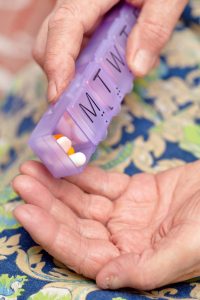There are four stages to most Part D plans: The Deductible Phase, the Initial Coverage Phase, the Coverage Gap (aka Donut Hole), and finally the Catastrophic Phase. Not all plans have a Deductible, but those that do, don’t always apply it to all prescription tiers. In many cases, Tier I and II generic drugs are covered without the insured needing to meet the deductible.
In 2024, the maximum deductible for any plan is $545. Some charge less, however. In fact, a few plans have a $0 deductible, but those policies typically have higher monthly premiums.
After the deductible is the Initial Coverage Phase. During this window, the insurance company pays more and you pay less for your prescriptions. It’s not uncommon for the insurance company to pay 75% of the cost in the Initial Coverage Phase. This phase does not occur until both you and your plan have spent $5,030 combined on covered drugs.
Next comes the Coverage Gap – more commonly referred to as the Donut Hole. Most people don’t reach it, but if you do, you pay a larger share of your prescription amounts. This window begins at $5,030 and ends once both you and your Part D plan have reached total costs of $8,000 in covered prescriptions.
Some insurance companies cover generics at a lower percentage in the Coverage Gap/Donut Hole. For 2023, there is a discount in the Donut Hole of 75% for drugs on your formulary. Nevertheless, in this phase, you can expect to pay about the same as 2023 amounts on covered prescriptions.
The final stage is the Catastrophic Coverage Phase. It begins once you and your selected Part D drug plan have paid $8,000 combined on covered prescriptions. In the Catastrophic Phase, you pay a small copay (or coinsurance amount) should you reach it. Most copays are under $10 at this stage.
The reduction/elimination of the Medicare Part D Donut Hole in 2020 applies in 2023. However, it’s important to note that consumers (and Part D providers) must spend more before they reach the catastrophic phase. The hope is that the Donut Hole Discount will help to alleviate some financial burdens.
 If you need Medicare Part D prescription drug coverage, we can help. We are an independent insurance agency specializing in senior health plans. We represent all prescription drug carriers direct to our clients.
If you need Medicare Part D prescription drug coverage, we can help. We are an independent insurance agency specializing in senior health plans. We represent all prescription drug carriers direct to our clients. Most PDP carriers offer two or three drug plans to choose from.
Most PDP carriers offer two or three drug plans to choose from.